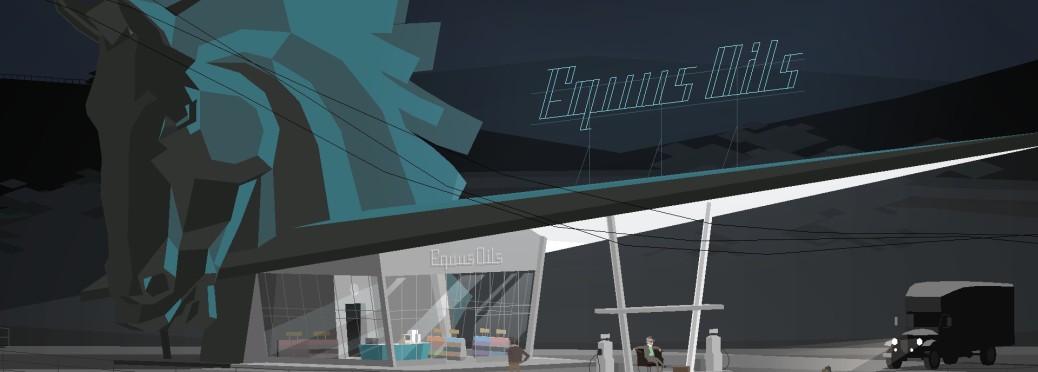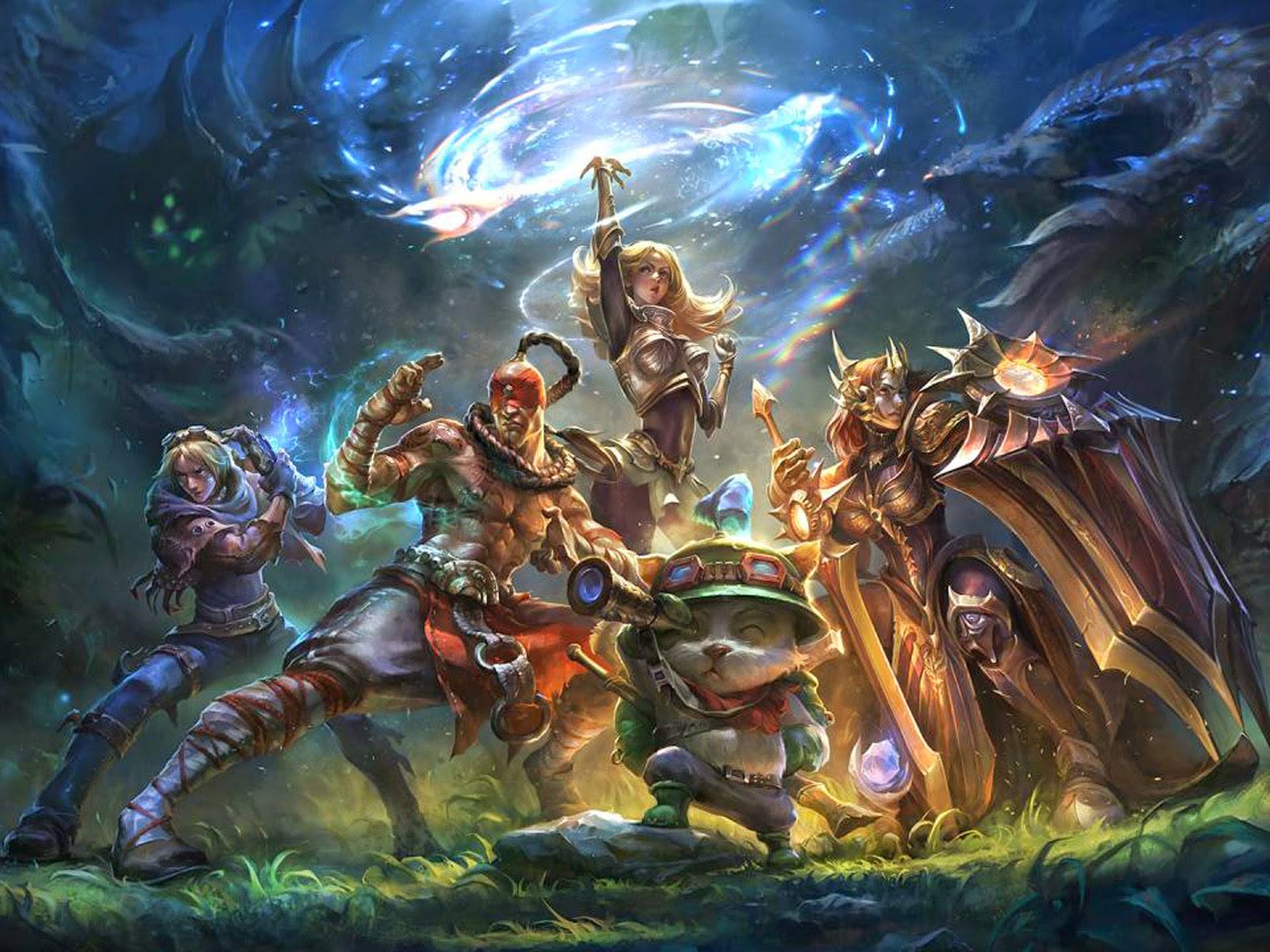Kentucky Route Zero isn’t a game about puzzles, as old-school adventure games were—it is a game that is itself a puzzle.
By James Perkins
Kentucky Route Zero released the first of its “Acts” on January 7, 2013. It was an odd title—a “point and click” adventure game that had more in common with Twin Peaks than it did The Secret of Monkey Island. In it, the player takes the role of Conway, a graying truck delivery man for an antiques store, trying to reach an elusive address that doesn’t appear anywhere on a map. Like its protagonist’s quest, the player’s search for “5 Dogwood Drive” off the magically-real “Route Zero” which raises more questions than it solves—to the frustration of some of its players. Though the Grand Winner at the 2013 Independent Games Festival, Kentucky Route Zero never found the broad audience that contemporary adventure games such as The Walking Dead did. But perhaps Zero’s appeal has more to do with what it says about adventure games than what sheer ludic pleasures it provides. Games like Braid and Fez—the indie darlings of 2008 and 2011, respectively—were certainly more financially viable than Kentucky Route Zero, but they share its interest in challenging conventions of both play and genre. Where Braid and Fez deconstructed the Platformer, Kentucky Route Zero does the same to the Adventure Game. The result is an excavation of the forms and tropes of its medium, a bridge to the novelistic and theatrical traditions that predated it, and a poetic self-critique of its own status as a computer program.
Kentucky Route Zero opens with Conway, an aging truck driver, standing in front of a monumental horse-head sign reading “Equus Oils.” You’ve stopped here to get the first of what will prove to be many suggestions on how to reach the address the antiques dealer has tasked you to visit. In true fetch-quest form, the man at the gas station informs you that he’ll help you access his computer for directions if you fix the circuit-breaker beneath the station. Descending into the cavern below, Conway witnesses players seated around a table, rolling dice and commenting on a roleplaying game they appear to be playing. While they remain completely oblivious to Conway’s queries, they too have lost something—a twenty-sided die, which, on further inspection, proves to be adjacent to the key you were commissioned to find in the first place. On returning from finding it, however, the RPG group is gone. The game begins by introducing us to the deep (literally underground) roots of adventure game storytelling—and the allusions only pile on throughout the rest of the game. Similarly, it acquaints us with liminal figures that always flit on the margins—ghosts of both gaming’s history and the history of the Kentucky coal mines around which the game takes place.
The game then introduces us to Shannon, a dispossessed TV repairwomen who arrived at the local mines searching for something she says she’s lost. The game cuts back to Conway, whose first tip to learn how to get to the house he’s meant to visit is to pass the “eternally-burning tree”—helpfully indicated on your driving interface by just that, a tree constantly on fire—to a house on the side of the road. There, you meet Weaver, a university student studying mathematics, who, like the Greek Fates, cryptically informs Conway that the only way he’ll find his quarry is through the “Zero,” and the only way he’ll find that is by contacting her cousin, Shannon. While passing between these areas—each splayed out from one camera-angle, over a crisp art style—the player can sometimes hear doleful bluegrass music, played by silhouetted figures in the foreground that disappear, unremarked upon, when the scene ends. Weaver, too, goes missing right after talking to her. The presentation gives the impression of surreal theatre, with characters popping on and off stage when it suits them, locations and set pieces obeying only their own, internal logic. It’s not an accident that the game is not only divided into “Acts” but also scenes, each change announced by black-and-white titles.
Shannon and Conway—the one acerbic, the other taciturn—begin their odyssey to reach the Zero. Shannon’s motivations for sticking with Conway aren’t ever clear—rather, she seems to help him out of loyalty to Weaver, whose parents, you soon learn, were killed when the local mines flooded. Shannon’s role as a TV repairwoman also carries self-referential significance: in the closing of Act I, Shannon and Conway again encounter Weaver, who asks Shannon to fix her TV. After doing so, the back-window of the house fazes out like TV static, revealing the entrance to the Zero itself. By repairing the television—literally, the “far vision”—Shannon and Conway can finally enter the parallel world of the Zero. They, like the players, are transported by our screens into an alternate dimension.
Throughout this journey, the player chooses branching dialogue options when piloting either Conway or Shannon, which, rather than simply illuminate different sides, construct entirely different realities. Take this exchange with Weaver, for example:
Weaver: That’s not how it’s supposed to look. You’ve made a mistake setting it up. Is it a foreign object to you? Which of your parents was it who wouldn’t allow you to watch television?
To which Conway has the following dialogue options:
Conway: Ma thought she heard ghosts in the static.
Conway: Dad thought it was radioactive
Conway: I know how to set up a TV
The game prompts the player not only to imagine what sort of man Conway is, but gives them the power to envision his past. This device comes to the fore in an exchange Conway shares with Lysette in a flashback scene in Act 3. Lysette, his boss at the antiques shop, stumbles through her dialogue, trying to dredge up old memories, as Conway fills in the gaps. While the bare bones of the story remain the same, the details shift widely based on the player’s interpretation.
This kind of “existential” dialog system not only places the player in an active role, but it also alludes to human-computer interaction generally. Conway, Shannon, and other characters interact with computers frequently, searching through indices and reading files. This process occurs on a more macro-level as well. Later in Act II, Conway and Shannon travel through the Route Zero itself, a large torus that can only be traversed by following “obscure rituals” that seem half-way between a scavenger-hunt and input instructions: go clockwise until you reach the crystal, then go counterclockwise until you reach the feather (for example). Each are symbols that the miners used to help them find their way in the mines you visited in Act I, but now, on the Zero, they appear as silver shapes that hover in front of you until you pass them. On reaching these “side-quest” destinations, instead of a graphical interface, you enter into a simple black/white text command, which then tells you a story stripped of text.
While this aspect of the game—the allusion to old text-based adventures, remained tangential to the main story through Acts 1 and 2, it moved is now front and center by Act 3. Conway, Shannon, and a gang of followers they’ve collected throughout the journey (again, all in effort to make an “antiques delivery” to Dogwood Drive) come to the end of a highway road off the Zero, and enter what the act titles glibly call “The Hall of the Mountain King.” There they encounter Donald, an old computer scientist stoking his dream-project. His life work, Xanadu (recalling both Coleridge’s Kublai Khan and Citizen Kane), is an eternally self-immolating mainframe computer that, after some coaxing, relays to Conway and company what first appear to be classic text-based scenarios: enter a wood, enter a house, “go North.” However, as they continue to interact with the program, they find that it simulates the very reality they’ve fallen into—a record of the Donald’s past as an obsessive researcher, but also a spooky simulacrum of their present. The players of Kentucky Route Zero thus “play” players of a game themselves, driving deeper and deeper into the caverns of memory. It’s no accident that “Xanadu” lies at the heart of the game’s five acts—a centrifuge that keeps the whole plot spinning.
Kentucky Route Zero thus isn’t a game about puzzles, as old-school adventure games were—it is a game that is itself a puzzle. Its creators, Jake Elliott and Tamas Kemenczy, have backgrounds in experimental music and performance, and it shows. The game’s fusion, then, of interactive elements of avant-garde theatre, challenge the readers to pay attention, alienating them from their own experience of playing a game–forcing them to consider not only the message, but the medium itself.



